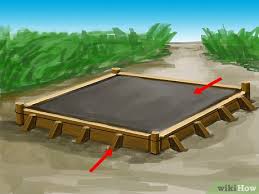Developing concrete forms is a crucial element of making foundations, surfaces, and also other structures. It’s crucial that you comprehend the different steps linked to this method to enable you to ensure that your Concrete forms is going to be dependable and protected. In this post, we’ll have a look at several of the essential steps for developing powerful concrete forms.
Step One: Collect Components
The initial step in creating Best concrete forms is usually to get all the supplies you’ll need to have. Including lumber (typically 2x4s or 2x6s), anchoring screws, fingernails, stakes, and masonry ties. If you’re employing wooden types, you might also need kind essential oil or wax to aid seal off the hardwood and stop it from soaking up dampness through the moist definite combine. You should also make sure you have suitable safety products like gloves and goggles on hand prior to starting any project.
Step 2: Structure Your Kinds
After you’ve obtained all of your materials, it’s time for you to commence laying out your kinds. This involves marking out the area where your form goes, which includes any part or advantage parts that might be required. Be sure that all of your current sizes are exact and make sure them well before going forward with building. It’s equally important to add any water flow holes with your structure if possible to your particular undertaking.
Step Three: Construct Your Types
Upon having organized the location where your type should go, it’s time and energy to start constructing it! Begin by nailing with each other any spot or edge pieces that are needed for your specific venture. Then begin affixing each piece of lumber one-by-one utilizing either screws or fingernails or toenails before the whole framework is finished. Make certain that each piece is securely connected before relocating into the up coming one! Lastly, use masonry ties to hold everything jointly firmly—it’s essential not to skimp on these!
Stage 4: Prepare Your Forms for Preparing Concrete
When all of your current pieces are securely linked jointly, it’s time and energy to put together them for pouring definite into them. This requires covering all exposed types of surface with form oil or wax along with checking each piece for just about any problems or use-and-damage which could have occurred during design which may affect its ability to endure when full of drenched concrete mixture down the road down the line.


